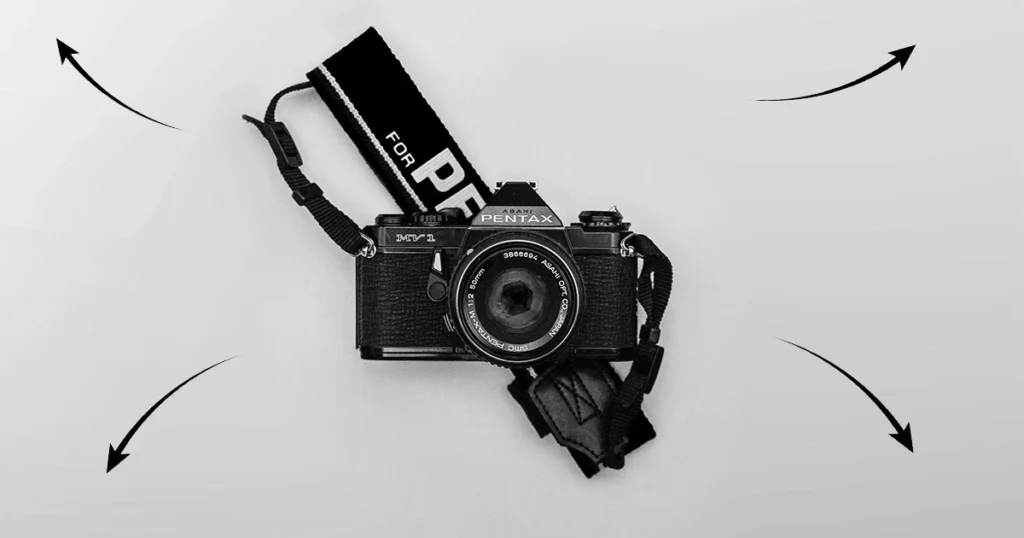
Take your photography to the next level by learning about camera angles. These angles can change how your photos look and feel. They can make your portraits, landscapes, or action shots stand out.
By trying different creative angles, you can add depth and mood to your photos. This makes your stories more engaging and memorable. It’s a great way to connect with your audience.
Key Takeaways
- Discover how camera angles can enhance the flattery and photogenic quality of your subjects
- Learn techniques for using perspective to create dynamic, visually engaging compositions
- Explore creative angles that can elevate your visual storytelling and artistic expression
- Understand the importance of considering camera viewpoint when shooting portraits, landscapes, and more
- Gain insights into how different angles can convey specific emotions and narratives
Photography Angles: A Powerful Tool for Visual Storytelling
Every photo has its angle, and the choice of angle changes the mood and story it tells. By trying out different camera views, you can focus on certain parts, hide others, and change how the viewer sees the scene. It’s key to use creative angles to make your photos stand out and be remembered.
Different Camera Viewpoints Convey Distinct Emotions and Narratives
In TikTok and Reels food videos, shots from above are often used. But for dance videos, full shots are the go-to. Medium shots are great for “hosted style” cooking videos seen on TV. Close-ups are big on social media, especially for food and faces. Extreme close-ups can really draw the viewer in, making them feel like they’re tasting the food.
Why Exploring Creative Angles is Essential for Stand-Out Images
Overhead shots are a hit in food videos, just like in still food photography. Up-angle shots make the subject look bigger and more powerful. Down-angle shots show vulnerability and help connect with the viewer. By changing the camera angle, you can create different feelings and stories in your photos, making them more engaging and unforgettable.
Bird’s Eye View: Capturing Scenes from Above
The bird’s eye view puts the camera right above the subject at a 90-degree angle. This angle makes lines, shapes, and shadows stand out. You can get this view with a drone or by using stairs or ladders for smaller subjects.
Techniques for Achieving Striking Overhead Perspectives
To get great overhead shots, think about using special gear like camera cranes or jib arms. These tools let you place the camera right above the scene. This gives your photos a unique look that adds drama and depth. Try out different lenses and framing to find the best shots.
When to Utilize the Bird’s Eye View for Maximum Impact
The bird’s eye view is great for food photos, still life, and scenes with patterns or lines. It’s also good for showing power in movies, adding tension and weirdness. Filmmakers like Wes Anderson use it to show details and what characters see.
High Angle Shots: Adding Dynamism and Slimming Effects
Photography benefits greatly from the high angle shot. It’s taken from above the subject, making it look vulnerable or small. This makes your subject seem more delicate or youthful. It’s great for portraits, making your subject look slimmer and more confident.
For pet or child photography, the high angle is also useful. Shooting from above makes your subjects look smaller, adding wonder to your photos. This method adds depth and interest, making your images stand out.
Remember, high angle shots can show vulnerability or submissiveness. It’s important to balance this with your story’s tone. Try different angles and heights to capture the emotion and story you want to tell.
Photography angles you can use for photoshoot
Face-to-Face Connections: Shooting at Eye Level
Using the face-to-face angle is a great way to make portraits and nature photos stand out. By placing your camera at the subject’s eye level, you create a direct link between the viewer and the scene. This makes the viewer feel like they’re part of the action.
This angle is perfect for close-up shots. It brings a feeling of closeness and makes the scene feel more real. Whether you’re taking a photo of a person or a beautiful landscape, getting down to their level adds a genuine touch. It’s something you can’t get from above or below.
Tips for Engaging Portraits and Nature Photography
To get the face-to-face angle, you might need to get creative with where you stand. Try kneeling, crouching, or even lying down to match the subject’s height. This can be tough, especially with tall subjects or wide scenes. But it’s worth it for the unique shots you’ll get.
The face-to-face angle is more than just a technique; it’s about telling a story and showing feelings. Play with different looks, poses, and the setting to make your photos really pop. This way, you’ll capture shots that grab attention and leave a lasting impression.
Low Angle Photography: Creating a Looming, Confident Look
In photography, the low angle shot changes how we see the subject. It makes the subject look strong and confident. This happens when you place the camera below the subject and aim it up.
This method is great for showing off the size and strength of your subject. It works well for people, buildings, or nature.
Maximize Impact with Wide Lenses and Foreground Elements
Using a wide-angle lens can make your low angle shots more powerful. This type of lens makes your subject look bigger and more powerful. Adding things like rocks or plants in the front can also help focus the viewer’s attention on the main subject.
Learning low angle photography lets you make images that show power and confidence. It’s perfect for capturing confident people, big buildings, or stunning natural scenes. This technique adds a powerful and interesting element to your photos.
The Bug’s Eye View: Unique Perspectives from Below
Unlock your creative side and try the bug’s eye view, also known as the worm’s eye view. This unique angle means shooting straight up at your subject from the ground. It gives everyday scenes a fresh and captivating look. It might take some extra work, but it can make your photos stand out.
Capturing Architecture and Tall Subjects from Ground Level
For tall buildings, monuments, or structures, the bug’s eye view works great. Place your camera low to the ground and look up. This makes your subject look grand and huge, creating a stunning shot.
This view isn’t just for buildings. It’s also great for nature and portraits. Shooting from down low makes your subjects look bigger and more powerful. Try using things like leaves or flowers to frame your subject for more depth.
To get the best bug’s eye view shots, get as close to the ground as you can. You might need to kneel, crouch, or even lie down. With practice and creativity, you can capture amazing images from a unique perspective.
Mastering Composition with the Rule of Thirds
The rule of thirds is a key technique in photography. It makes your photos look better. Imagine your frame split into nine parts by lines. Place your subject on these lines or where they meet for a better look.
Grid Techniques for Balanced and Visually Appealing Framing
Many cameras let you see a grid to help with the rule of thirds. This grid helps you place your subject right. Try different grid settings and subject positions to improve your skills.
Using the rule of thirds makes your photos more engaging. It helps tell a story with your shots. Whether it’s landscapes, portraits, or still life, this technique can elevate your photography.
Flattering Poses and Model Positioning
Getting the right pose and position is key for great portraits and fashion shots. Try out different poses, angles, and body language to make your photos stand out. Think about how your subject relates to the camera and how props, backgrounds, and lighting can tell a story and add emotion to your shots.
Learning classic and dynamic poses can make your fashion photos timeless and interesting. Small changes in how someone stands or sits can change the whole feel of a photo. This can show different feelings in your pictures. Using a variety of poses makes your photos more exciting and artistic, making your models look great.
How you place hands and arms can add elegance and style to a pose. Great facial expressions and eye contact make a model’s pose more appealing. Using unique poses and props can make your photos more creative, adding depth and interest.
Lighting Setups for Dramatic Angles
The choice of lighting can make your photos pop when used with creative angles. Try out different light sources and tools to get dramatic shadows and highlights. These can make your photos stand out.
Using Natural Light and Artificial Light Sources Effectively
Use backlighting, side lighting, and overhead lighting to bring out the depth in your subjects. A key light at a 45-degree angle is popular. Adding a fill light balances the exposure for a polished look.
Rim lighting needs an extra light to expose the subject well. Try different portrait lighting styles like loop and Rembrandt lighting for unique effects. High contrast lighting highlights important parts, while soft light creates gentle shadows for different looks.
Conclusion
Learning different photography angles can make your photos more engaging and dynamic. By trying out various views, like bird’s eye views and low angles, you can show different feelings and stories. It’s important to be creative, take risks, and use rules like the rule of thirds for better composition.
Using creative angles, good lighting, and the right placement of your subject can make your photos pop. This is true whether you’re taking portraits, landscapes, or other types of photos. Mastering visual storytelling with different perspectives can take your photography to the next level.
So, don’t be afraid to try new photography angles and break the usual rules. Let your unique style show in every photo you take. With practice and a desire to experiment, you’ll soon be making photos that really grab people’s attention.
